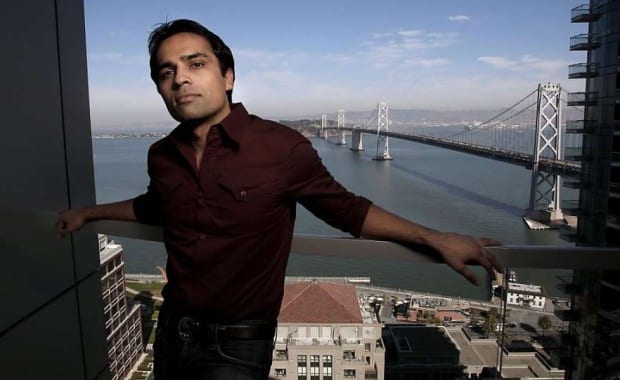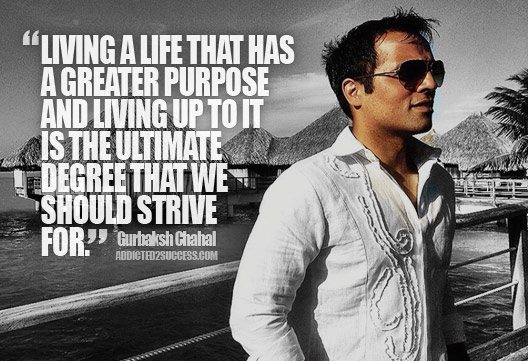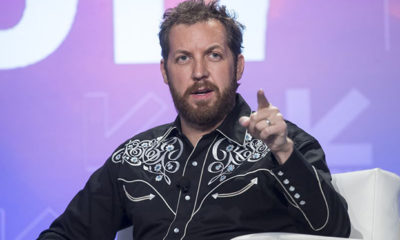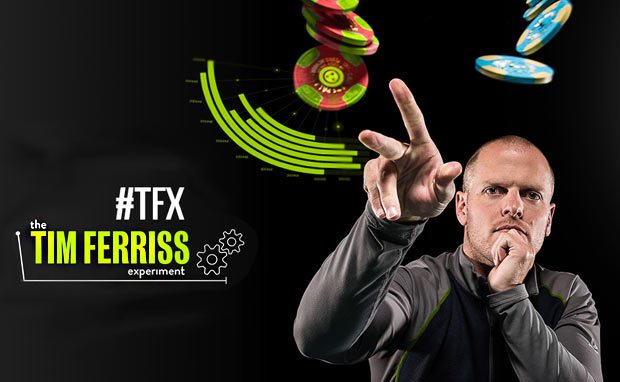Success Advice
The $340 Million Die Hard Entrepreneur “Gurbaksh Chahal” Shares His Advice For Success

I was fortunate enough to catch up with the $340 Million Silicon Valley Entrepreneur “Gurbaksh Chahal” this week to find out what it takes to succeed in life and in business.
Gurbaksh had sold 2 successful online advertising companies by the age of 25 for a total of $340 Million and is onto his 3rd and biggest company yet, RadiumOne. Gurbaksh will be launching RadiumOne in over 70 markets and is excited to announce that Australia is one of them.
Below is amazing success advice from a die hard entrepreneur Gurbaksh Chahal:
Joel – The first company you created “Click Agents” was founded by you at the age of 16 and not long after that, it sold for $40 million. Nine years later you sold your second company “Blue Lithium” to Yahoo for $300 Million. Making close to half a billion dollars in the space of 9 years, can you tell us, is there some secret formula that we should know about?
Gurbaksh – Well I think the secret formula comes down to success in general, and you’ve got to constantly keep an open mind, be creative, and don’t be afraid to re-invent yourself.
When I was 16 I didn’t really have a clue about business, so you could say “I got lucky“, whatever that means. The second time around I learned what it was really like to be a CEO and I believe that both of these opportunities have prepared me for my current company, by every metric whether it’s revenue, size, opportunity, mission or geography, RadiumOne is the biggest of all of my endeavours.
Joel – Do you believe it when they say “Ignorance is bliss”? Do you feel that when you were younger that maybe you were a bit ignorant and that could be the reason why you didn’t see a lot of the obstacles ahead of you that some of the more experienced and older entrepreneurs would have been scared of?
Gurbaksh – I wouldn’t say “Ignorant,” because I think the thing that was probably my biggest virtue was that I didn’t know the meaning of failure.
The older you get with the traditional message of schooling, or the methods of society, whether it’s family, friends or situational you end up trying to play it safe. At 16 I didn’t really know what I could lose. There is an essence of, when you are fearless, you become more creative, and the more fearless I became, the more creative I was.
Joel – What would you say has been one of the biggest fears you have ever faced and what did you do to overcome it?
Gurbaksh – So here’s the thing, there is constant fear in business. You’ve got to have the stamina to realise that is the very path to success and you’ve got to be able to stomach it.
There has been several times when I have put everything on the line and I have had to re-invent myself or I’ve had to hire a completely new leadership team and make significant product changes and all of those were betting the company on something.
All of those are triumphs to success, so there’s no real path, success is never linear, it’s almost like a hockey stick. The more risk you take, the more of a U-Shape formula you should end up with.
Joel – I just came back from a holiday in “India,” I understand you were born there but grew up in San Francisco. One stand out thing that I noticed over there is that they are very committed to their traditions.
Do you still carry on any traditions from the motherland?
Gurbaksh – From a cultural stand point and a family stand point I am Indian by heart, but at the same time I’m probably more spiritual at the end of the day, and that’s defined in the inner you and I think that defines who we are as people.
Living a life that has a greater purpose and living up to it is the ultimate degree that we should strive for.

Joel – How do you balance your life? I find it a challenge at times to balance mine, and I only run a blog and a couple of other business ventures so I could only imagine that you would have your plates pretty full most days.
Gurbaksh – At the end of the day, you have to look at success itself as a balance. There are a significant amount of things that you have to do to achieve happiness at the end of the day. Nonetheless, you’ve got to make sure you have balance in your life.
There are a number of things that we need to do as entrepreneurs to be successful, but what is success at the end of the day? Is it your bank account? Is it happiness? I think that at the end of the day it’s happiness.
In an article I did for LinkedIn, I talked about un-plugging yourself from the wired world. The importance of continued learning, giving back, less over thinking, being grateful for what you have, realizing that relationships are everything in life, making peace with your past, being authentic and learning how to forgive.
Joel – Where do you see the world heading with technology and how do you stay on the curve of innovation?
Gurbaksh – One of the key paths to technology is that it changes significantly and quickly. I have been blessed as I have stuck to my roots of advertising technology and I have been given the opportunity to re-shape it and create it 3 times around now and I think the key secret there is that you should stick to what you know.
I’m a very different entrepreneur than many others. I look at Elon Musk and think of him as a genius because he is that guy that can juggle many different things in many different industries, but I don’t think many of us can do that. Even when you look at the late Steve Jobs, he re-defined 8 different industries.
I, on the other hand just stuck to my core which I think is kind of a testament were “If you can do everything that’s great, but if you can be really great at just one thing then that’s also not bad.” I have looked at that as an opportunity and a blessing to continue to innovate.
Part of the key metrics to success in an enterprise is to know how far you are really willing to take it. Are you pushing the boundaries? You can’t make safe bets.
Even today, 4 years into this, 300 employees worldwide, profitability, significant amount of revenue and so forth, the decisions I make as the CEO goes from choosing the color palette on the website, choosing the design of what the reporting looks like, down to what the product ends up becoming.
So you really have to:
- Be someone who pays attention to detail
- Be creative
- Problem solve
- And always be creative with the way you solve those problems.
Joel – What is your true definition of success?
Gurbaksh – I think success is defined by understanding purpose. If you live a life of purpose then you’ll never be bored.
What was something Gurbaksh said that resonated most with you and why? Share with us below!
Did You Know
How Skilled Migrants Are Building Successful Careers After Moving Countries
Behind every successful skilled migrant career is a mix of resilience, strategy, and navigating systems built for locals.

Moving to a new country for work is exciting, but it can also be unnerving. Skilled migrants leave behind familiar systems, networks, and support to pursue better job opportunities and a better future for their families. (more…)
Life
10 Research-Backed Steps to Create Real Change This New Year
This New Year could finally be the one where you break old patterns and create real, lasting change.

Every New Year, we make plans and set goals, but often repeat old patterns. (more…)
Change Your Mindset
The Silent Skill That Makes People Respect You Instantly
What truly earns respect and why most people go about it the wrong way

Everybody craves respect but not everyone earns it. Some people believe that a title, years of experience, or a position of authority automatically entitles them to respect. (more…)
Entrepreneurs
The Essential Skills Every Entrepreneur Needs In 2026
Success in the digital age isn’t about luck. It’s about mastering the skills that separate dreamers from doers.

When I was 22 years old, I started my first side hustle as a ghostwriter. (more…)
-

 Did You Know4 weeks ago
Did You Know4 weeks agoThe Success Patterns You Inherited (And Didn’t Notice)
-

 Entrepreneurs4 weeks ago
Entrepreneurs4 weeks agoThe Essential Skills Every Entrepreneur Needs In 2026
-

 Change Your Mindset3 weeks ago
Change Your Mindset3 weeks agoHow to Turn Your Mind Into Your Greatest Asset (Instead of Your Enemy)
-

 Change Your Mindset3 weeks ago
Change Your Mindset3 weeks agoThe Silent Skill That Makes People Respect You Instantly
-

 Life2 weeks ago
Life2 weeks ago10 Research-Backed Steps to Create Real Change This New Year
-

 Tech2 weeks ago
Tech2 weeks agoWhat’s in a Name? How to Get Your Domain Right
-

 Did You Know1 week ago
Did You Know1 week agoHow Skilled Migrants Are Building Successful Careers After Moving Countries



















7 Comments